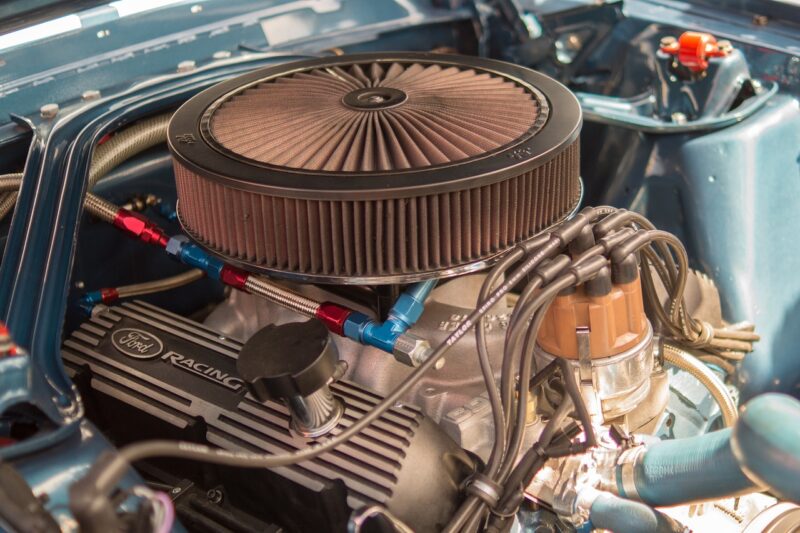Understanding Basic Engine Repair: A Guide for Beginner Mechanics
November 13, 2024

For many, the thought of diving into engine repair seems as challenging as performing brain surgery. However, understanding basic engine repair can empower you as a mechanic and save you time and money in the long run. In this article, we’ll explore essential concepts, tools, and steps that will demystify engine repair for beginners.
1. Understanding the Engine Basics
Engines are complex machines that convert fuel into motion. At the heart of this process is the internal combustion engine, which operates on a few key principles:
– Fuel and Air Mixture: The engine mixes air with fuel to create a combustible mixture.
– Combustion Process: As the fuel ignites, it creates a powerful explosion that pushes pistons down, converting chemical energy into mechanical energy.
– Timing and Stroke: The engine has a specific timing mechanism that ensures that fuel ignites at the right moment in the cycle.
Understanding these basics is crucial for any mechanic. As you delve deeper into repairs, knowing how these processes work will help you diagnose issues more effectively.
2. Necessary Tools for Engine Repair
Before you begin repairing engines, having the right tools is essential. Here’s a list of basic tools every beginner mechanic should own:
– Wrenches: A set of open-end and box-end wrenches will help you with various bolt sizes.
– Socket set: A ratchet socket set allows for easier access and has more torque.
– Screwdrivers: Flathead and Phillips screwdrivers in various sizes will cover most situations.
– Pliers: Needle-nose pliers and regular pliers will be helpful for gripping and pulling.
– Engine hoist: If you’re lifting large engine parts, an engine hoist is valuable for safety.
– Oil filter wrench: This tool will simplify changing oil filters, which is crucial in engine maintenance.
– Torque wrench: Important for ensuring bolts are tightened to the right specifications.
Once you have your toolbox ready, familiarize yourself with each tool’s purpose to optimize your repair process.
3. Common Engine Problems and Fixes
Here are some frequent issues beginners may encounter and basic approaches to fixing them:
– Overheating Engine: Check the coolant level, radiator, and hoses for leaks. Replace the thermostat if necessary to keep the engine cool.
– Engine Won’t Start: Start with the battery; ensure it’s fully charged. If the battery is good, check the fuel pump and ignition system.
– Check Engine Light: Use an OBD-II scanner to interpret codes and diagnose the underlying issue.
– Oil Leaks: Inspect gaskets and seals for wear. Replacing these components can often fix leaks without needing extensive repairs.
Each of these issues can often be diagnosed and repaired with patience and the right techniques, making engine repair approachable.
4. Basic Engine Maintenance Practices
Regular maintenance can prevent larger problems down the road. Here’s a checklist of practices every mechanic should adopt:
– Oil Changes: Change the oil every 3,000 miles or every six months to keep the engine lubricated and functioning well.
– Air Filters: Replace air filters every 12,000 to 15,000 miles to ensure proper airflow and efficiency.
– Spark Plugs: Check spark plugs every 30,000 miles and replace them as necessary to maintain proper ignition.
– Fluid Levels: Regularly check and top off fluids, including brake fluid, transmission fluid, and coolant.
– Belt and Hose Inspection: Inspect belts and hoses for signs of wear or fraying; replace them if necessary.
Adopting these basic maintenance practices not only prolongs engine life but also enhances performance.
5. Step-by-Step Guide to a Simple Engine Repair
To illustrate basic engine repair, let’s discuss a common project: changing the oil.
Step 1: Gather Materials
Ensure you have the necessary tools and materials, including new oil, an oil filter, and a container for the old oil.
Step 2: Safety First
Turn off the engine and let it cool down. Engage the parking brake and remember to wear safety goggles.
Step 3: Remove the Oil Plug
Using a wrench, remove the oil drain plug. Let the old oil drain completely into your container. Replace the plug once done.
Step 4: Change the Oil Filter
Using an oil filter wrench, remove the old oil filter and apply a slight amount of new oil to the gasket of the new one before installing it.
Step 5: Pour in New Oil
Using a funnel, pour the new oil into the engine. Consult the owner’s manual for the correct type and amount.
Step 6: Check Levels
Start the engine and let it run for a few minutes. Turn off the engine, check the dipstick to ensure the oil level is correct.
Following these steps ensures a smoother engine operation and represents a foundational repair skill.
Conclusion
Understanding basic engine repair is not just for professional mechanics; it can be a rewarding hobby or a valuable skill set for anyone interested in cars. With the right tools and knowledge, you can tackle basic repairs and preventive maintenance with confidence. Start small, learn as you go, and soon you’ll find yourself more adept in the world of engine repair than you ever thought possible. Always remember, safety and accuracy are important, so take your time to learn and practice.
If you have the desire to expand your knowledge even further, consider enrolling in a local automotive repair course or finding online resources that provide more in-depth training. Happy repairing!





